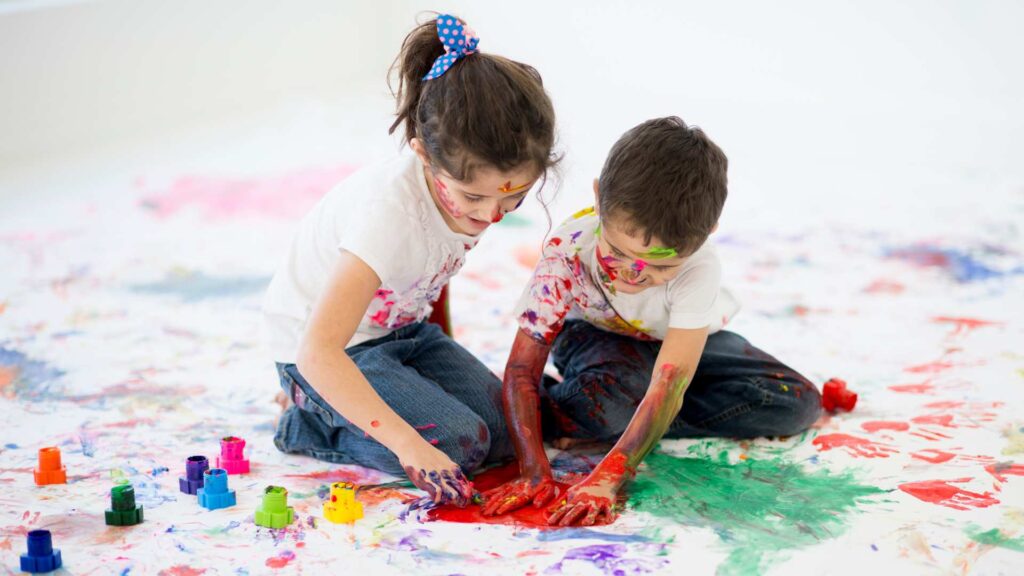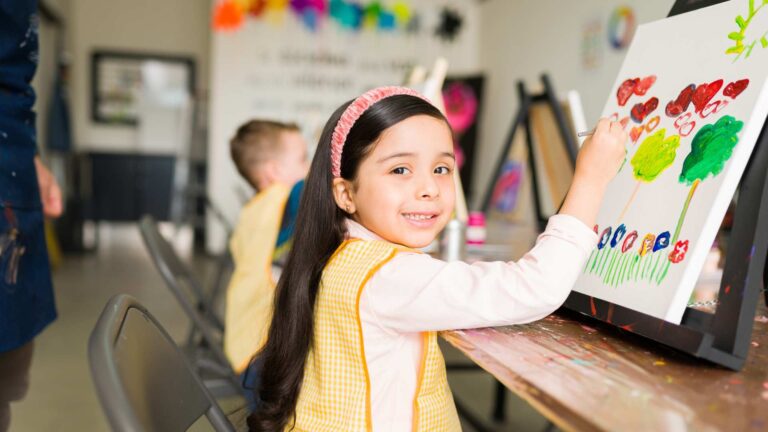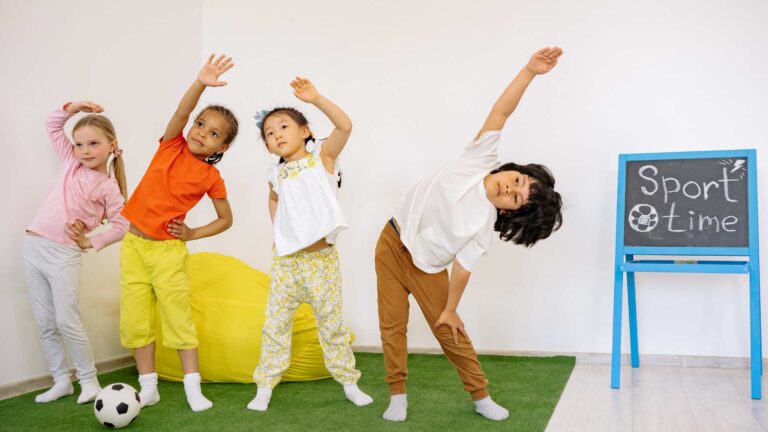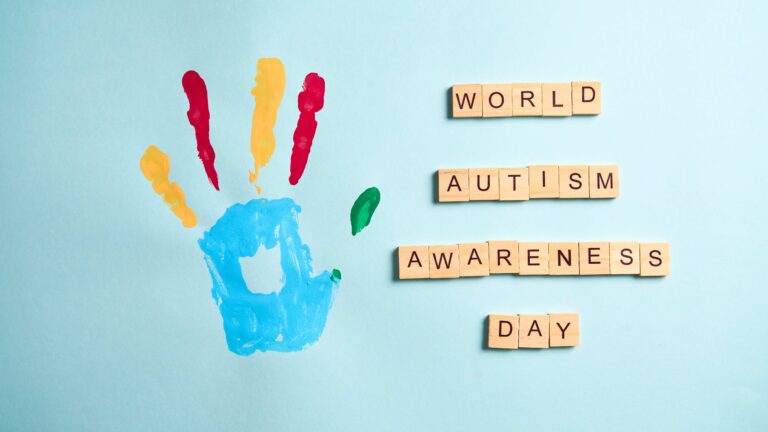Table of Contents
What therapy approach is best for autism?
Art therapy for autism offers a unique way for children on the spectrum to express themselves when words might not be enough. For many families, navigating the world of autism can feel overwhelming, especially when it comes to finding effective therapies that resonate with their child’s individual needs. Art therapy taps into something universal, the desire to create, and provides a safe, nonverbal way for children with autism to communicate and connect with the world around them.
Art therapy, as applied to autism, is more than just a creative activity. According to the International Journal of Art Therapy, this therapeutic practice can address the developmental, social, and behavioral challenges often associated with autism spectrum disorders (ASD). For many children on the spectrum, art therapy serves as a non-verbal avenue for processing emotions and experiences. It’s a tool that allows them to communicate in ways that feel natural and comfortable, bypassing the anxiety or confusion that can come with verbal interactions.
But how exactly does art therapy for autism work? What art therapy approach is best for autism? Let’s find out more in this blog by ABA Centers of Rhode Island.
Definition of Art Therapy
Before describing the various benefits of art therapy for individuals on the spectrum, let’s first learn about its definition and purpose. According to the American Art Therapy Association, art therapy is a form of therapeutic practice that combines mental health care with the creative process of art making. Led by trained professionals, this approach helps individuals, families, and communities address emotional, cognitive, and social challenges.
Through creative expression, participants can explore their emotions, improve self-awareness, and build resilience. Art therapy is not only about creating art but also about using the process to promote healing, foster personal growth, and address relational or social problems.
Art and ASD

Art is a medium anyone can use, not necessarily with a therapeutic purpose but as a form of expression. However, for individuals with autism, it can serve both roles—creative outlet and therapeutic tool. Art therapy plays a significant role in supporting individuals with autism by addressing a range of developmental and emotional needs.
A study by the American Journal of Occupational Therapy highlights how occupational therapists use creative arts as an effective tool for children with ASD. This research found that activities such as drawing, painting, music, and theater had a positive impact, particularly in enhancing performance skills and addressing personal challenges.
More benefits include:
- Enhances emotional expression
- Improves fine motor skills
- Encourages social interaction
- Boosts self-esteem
- Supports cognitive development
- Aids in reducing anxiety
- Promotes sensory integration
- Fosters creativity and problem-solving
- Provides a non-verbal communication outlet
Types of Art Therapy for Autism
Art therapy can take many forms, and the key is finding the right fit for each child. Here are some common types of art therapy that have proven beneficial for children on the autism spectrum:
1. Drawing and Painting: These classic art forms are great for children who enjoy visual expression. Whether through free drawing or more guided activities, painting and drawing allow children to explore their emotions and ideas while developing fine motor skills.
2. Sculpting with Clay: Clay is a highly tactile medium, which makes it perfect for children with sensory needs. The act of shaping, molding, and rolling clay can be very soothing and help develop hand-eye coordination and focus.
3. Collage and Mixed Media: For children who prefer structure, creating collages can be a way to explore different textures, colors, and patterns. It also encourages decision-making as they choose what elements to include in their art.
4. Music and Dance Therapy: While visual arts are often the focus, incorporating other forms like music and dance can be incredibly effective for some. Moving to music or creating rhythms can help children express emotions physically while also improving coordination.
5. Self-Portrait Drawing: This exercise can help individuals on the spectrum enhance self-awareness and grasp their emotions. Have them create a drawing of themselves, incorporating details that reflect how they are feeling at that moment. They might include facial expressions, body language, or elements from their environment that relate to their current emotional state.
Bringing Art Therapy Home: Tips for Parents
You don’t need to be a professional therapist to incorporate art therapy techniques at home. Here are some simple activities parents can try to support their child’s creativity and self-expression:
1. Set Up an Art Space: Create a designated area in your home where your child can explore different art materials freely. It doesn’t have to be a professional set; just a table with paper, markers, paints, or clay will do.
Let your child choose what they want to work with, allowing them to take control of their creative process.

2. Focus on the Process, Not the Product: The goal of art therapy for autism is not to create a masterpiece but to engage in the act of creation. Don’t worry about the result; instead, encourage your child to enjoy the process, whether it’s making a mess with paint or experimenting with different shapes in clay.
3. Use Art to Talk About Emotions: If your child struggles with identifying or expressing emotions, art can support and bridge that gap. After a session of drawing or painting, gently ask your child to tell you about their artwork. Use this opportunity to explore what they might be feeling and offer support.
4. Make It a Routine: Consistency is critical for children with autism. Try to make art a regular part of your child’s routine, whether it’s a weekly family painting session or a few minutes of quiet coloring before bedtime.
You can start implementing art therapy in the life of your child with autism little by little; not only will this technique provide them with a space for expression, but it will also help them to improve their motor skills, coordination, and more. Who knows, you may even be nurturing the first steps of a professional artist.
Art Therapy as Part of a Holistic Approach
Art therapy is not only a powerful standalone tool but also complements other therapeutic approaches, including Applied Behavior Analysis (ABA). In a holistic approach to autism care, integrating art therapy can enhance the effectiveness of various treatments by offering additional avenues for emotional and social development.
In ABA sessions, art therapy serves as a valuable tool for reinforcing skills and addressing challenging behaviors. Therapists often incorporate creative activities to teach and practice new skills in a way that is engaging and motivating for children. For example, through art-based exercises, therapists can promote positive behaviors, such as turn-taking and sharing, while also working on reducing challenging behaviors.
Art therapy allows children to express themselves in a non-verbal manner, which can be particularly useful when working on behavioral goals. It provides a medium for children to practice self-regulation and coping strategies while simultaneously reinforcing the skills they are learning through ABA therapy.
Personalized Care with ABA Centers of Rhode Island
At ABA Centers of Rhode Island, we utilize our clients’ artistic abilities and the art itself during therapy sessions to create a dynamic environment that encourages greater confidence and enjoyment while integrating behavioral approaches to address the most difficult traits of autism.
Our therapists create personalized plans for each client based on their individual needs, family dynamics, and abilities. This approach ensures that ABA sessions are part of a structured plan that promotes the development of positive skills and overall well-being for both the individual with autism and their family.
Call us at (855) 922-4184 or visit our website for more information on how our ABA therapy program works and how we can promote positive behaviors and independence.








